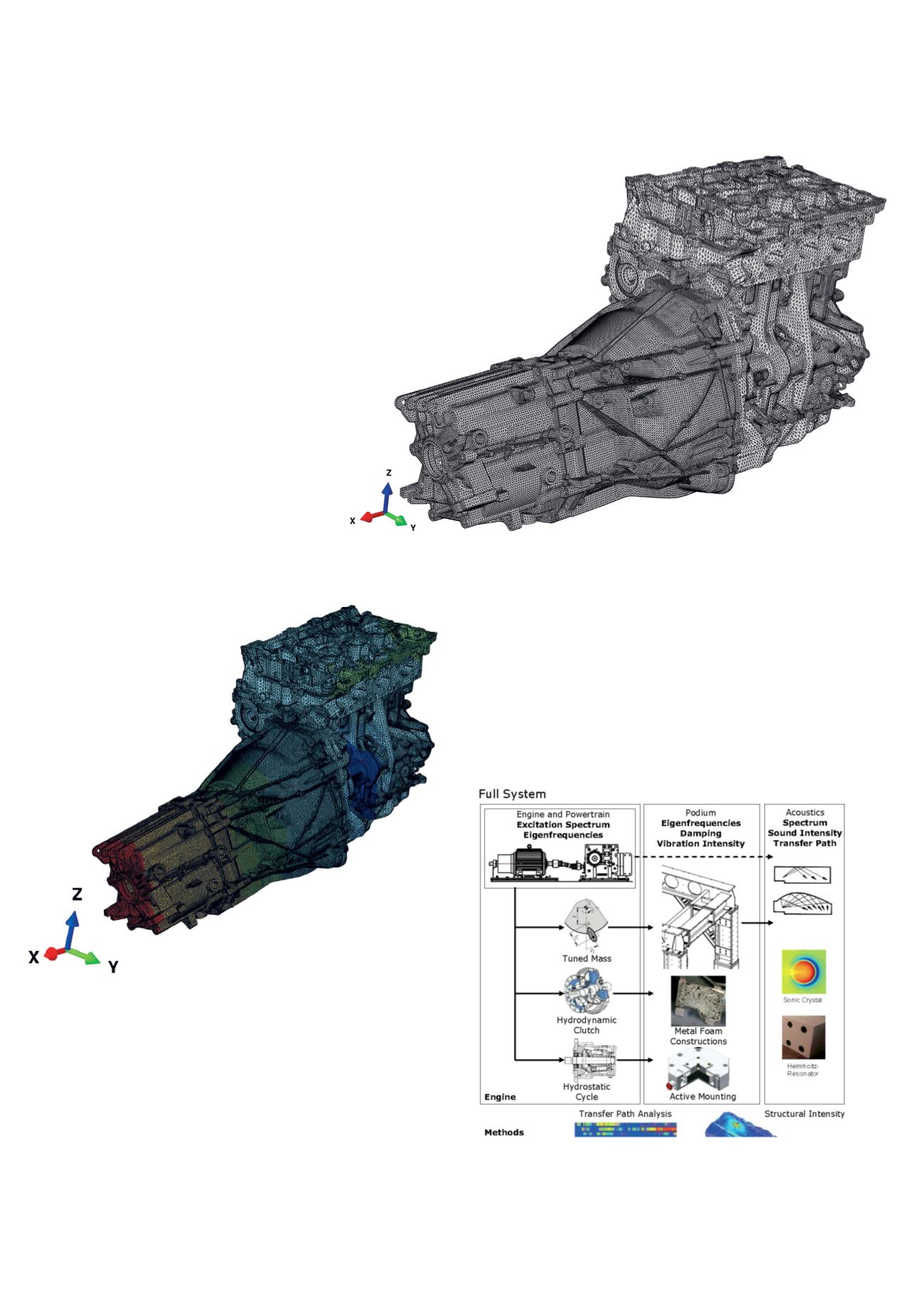

205
Vibroacoustics of Vehicles and Machines
Vibroacoustics, acoustics of vehicles, experimental acoustics, computational acoustics (FEM/BEM), structural
dynamics and structure-borne sound, uncertainty quantification, damage detection, acoustic porous materials
n
In 2017, the Chair of Vibroacoustics of Vehicles and Machines
put emphasis on multidisciplinary research and development and
establishing the new test facilities. Research funds have been
successfully launched to continue fundamental and applied
research at the Chair. The purchase and establishment process
of experimental test facilities started in 2016 have been
completed.
Research Projects
Innovative and more efficient strategy on
modeling vibroacoustic systems (BFS)
This project concentrates on the modeling
process of vibroacoustic problems. The
case study is the engine-transmission unit
in a vehicle, with a special focus on
bolted assemblies. An assembly is the
combination of monolithic components
joined together. The joint area is a vulnerable point in
structural dynamics and has to be carefully investigated.
3D finite element model of an engine-transmission assembly
First vibration mode shape
Development of the sound-optimized Pianissimo
stages (ZIM, SBS+FH Zwickau)
With the help of modern CAE methods, the innovative
development process of the stage podium SBS-BP-PP-1,
‘Pianissimo’ with an updated list of requirements in com-
bination with a vibroacoustic optimization substantially
differs from the state of the art development processes of
stage podiums. While introducing the new methodology
Development of the sound-optimized Pianissimo stages
of utilizing CAE methods, the manufacturer can increase
the technological performance level. Virtual simulations
together with experimental tests provide useful informa-
tion about possible sources of excessive vibration and
sound emission to keep them at a minimum level. In this
way, an optimized stage podium with improved stage
elevator performance is developed. Further, the project
provides realistic minimum noise level criteria to support
requirements of tender documents.



















